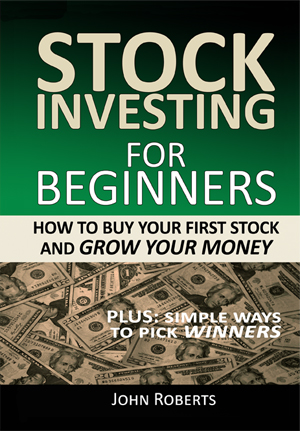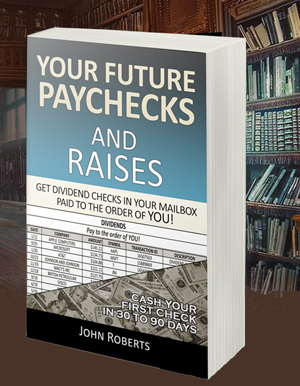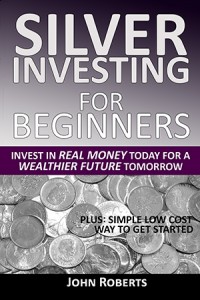You May Be Buying The Wrong Kinds Of Stocks – Buy These Instead
Anne Scheiber, a retired IRS agent of modest means, created $22,000,000 in wealth before she died in 1995. She was a self-made millionaire. What was her secret?
Well, it turns out that many of these secret millionaires seem to invest in the same kind of stocks. And what’s particularly interesting is that these stocks are available to everyone. And it doesn’t take a genius-level IQ, a wealthy family, or exceptional good luck to build this serious level of wealth with them over time. We’re talking wealth and income that can change your life.
But the problem with most investors is they focus on the wrong kind of stock, and ignore the right kind.
Now there are many different kinds of stocks you can invest in. But they all tend to fall into one of two groups.
You can buy stocks that you think will grow in value over time. These are called growth stocks. Or you can buy stocks that pay you income. These are called income stocks.
You will also hear the term “growth and income stocks.” These stocks do both – they grow AND pay you income, although they typically grow a bit slower than pure growth stocks.
Most people think about growth stocks when you mention investing. They’ve heard a story about a friend that bought stock in a new company. And the company really took off, became very large and profitable, and now their shares are worth a lot of money.
It’s an exciting kind of “get rich quick” story. And so everyone is out chasing the next big growth stock, trying to make this happen for themselves.
And this type of growth can really happen — over time. For example, had you bought $1000 worth of Microsoft stock in 1993, your shares would have grown to be worth about $20,000 by 2015.
That’s not too shabby. The company, and its shares of stock, really grew in value over time. So you can see why people invest in growth stocks. And like I said, this is the typical way that people think about stock investing. They only think of how much the stock will grow in value. Perhaps this is the way you view stocks too.
But that’s not necessarily the type of stock the Anne Scheiber’s of the world would focus on.
Because there’s another way to think of stock investing; another type of stocks to consider besides growth stocks. And they are income stocks. These stocks pay you money.
You see, most companies start out as growth stocks. And in the beginning, they don’t pay any of their profits to the stockholders. They use those profits to grow their business rapidly in the early years of their life. And if you are a stockholder, you get to go along for that profitable ride.
But eventually, after all the years of rapid growth, their growth slows down. That’s because they have reached most of the market with their products. They are still profitable, earning income every year. But there are less ways for them to grow their business. They are now mature, well established companies. And they need less of their income to grow the business. So they start paying their stockholders part of their profits.
As we mentioned earlier, these payments to you, the stockholder, are called dividends. You can think of dividends as the company “dividing” up the profits of the company, and sending them to the business owners.
Once a company matures to this point, people start thinking of it more as an income stock, instead of a growth stock. So when they buy shares in it, invest in it, they are thinking more about how much it will pay them in dividend checks, instead of how much it will grow in value.
These income stocks have been less popular in recent years, probably due to all the phenomenal growth stories people have heard about stocks like Microsoft, or Apple. That’s understandable. Growth stocks are exciting. They have a great story, and you hear about them all the time in the news.
But it wasn’t always this way. In years past, the first thing investors would ask when their broker recommended a stock was how much it would pay them — what were the dividends. It wasn’t a crazy question. And they were in good company by asking it. Indeed, John Rockefeller, founder of Standard Oil, said that the greatest pleasure he got was when he received his dividend checks from his stocks. So Rockefeller certainly thought income stocks were important.
And with income stocks, the company really will send you a check in the mail for your share of the profits, typically every three months. If you own their stock, you will receive a dividend check. Which you can deposit in your bank account. And spend how you like. The money is yours. Because you are one of their business owners.
Practically speaking, most stockowners just set it up where the money is directly deposited into their stock account. It’s just easier than getting a check every three months and having to deposit it into their checking account. And they can even set it up where the dividend will automatically buy more of the stock, thus increasing their investment and future dividends. This is called dividend reinvestment.
And over time, the dividend checks can be quite significant. As we mentioned earlier, Warren Buffett gets a Coca Cola dividend check for $448,000,000 every year. Clearly, Coke is it!
So income stocks are certainly something to consider.
Now, dividend stocks tend to be less glamorous and more boring. You won’t hear all the exciting stories about them in the news. But like the great mutual fund manager Peter Lynch said, his perfect stock “sounds dull… and it does something dull.”
Think of Clorox in this context. You know, the company that makes bleach for your laundry. That’s pretty dull and boring. But they pay a dividend every year. And people are going to buy bleach and wash their clothes, year after year. So you will keep getting dividends from them, year after year.
Here are some more of Peter’s favorite boring stocks from the past. Try payroll manager Automatic Data Processing (ADP). Or Consolidated Rock – a concrete maker (now CalMat Co., CLWY). Very dull. Very boring. Although the last one, Consolidated Rock, strikes me as somewhat humorous, like something out of a Flintstones cartoon.
But people will always keep washing their clothes. And payrolls will always need to be paid. And the world is not going to quit using concrete. So these are steady, reliable businesses to invest in.
Here’s one more example. It’s Microsoft (MSFT). It started out as a super growth stock. Their Windows operating system was innovative and exciting at the time they introduced it. But today, most people already use Windows. And Microsoft is considered kind of boring.
And guess what. Now that their big growth phase is behind them, Microsoft pays a dividend. So Microsoft is a great example of a growth stock that matured and turned into an income stock. But just because it’s boring now, don’t ignore it. Because Microsoft is a cash-gushing money machine. They will probably be around for a long time, and keep paying bigger and bigger dividends. For many stockholders, Microsoft has been a great investment.
Interestingly, Microsoft’s competitor Apple (AAPL) has also matured and pays a dividend. But Apple is not considered a boring stock. Their flashy marketing has kept them at the forefront of the public’s attention. Indeed, customers get in lines for hours in advance to buy their latest product. And Apple, now an income stock, has also been a great investment.
So basically, there are two kinds of stocks you can invest in. They are growth stocks and income stocks. And over time many growth stocks turn into income stocks.
Most people invest in both types, as do I. But I tend to favor income stocks. Good, solid, possibly boring stocks that pay a dividend. Because they pay me money to do so. And they usually keep growing to some degree as well. So I feel like I am getting the best of both worlds.
In other words, less glamour and more income, with some growth.
Anne Scheiber invested like this, and you can too.
You can create wealth and a future income for yourself, investing like Anne did. Income that feels like paychecks – that you don’t have to work for.
Just check out my latest book, Your Future Paychecks And Raises: Get Checks In Your Mailbox Paid To The Order Of YOU! You can browse if for free right here http://a.co/6AeUHFY.
Go ahead, check it out. You’ll be glad you did. http://a.co/6AeUHFY
To your health and prosperity – John
P.S. Oh, and there’s one other thing Anne Scheiber did with those dividend stocks that really increased her wealth. And that’s called dividend reinvestment. It’s a miracle in multiplying wealth. And we’ll get into that in our next post.



